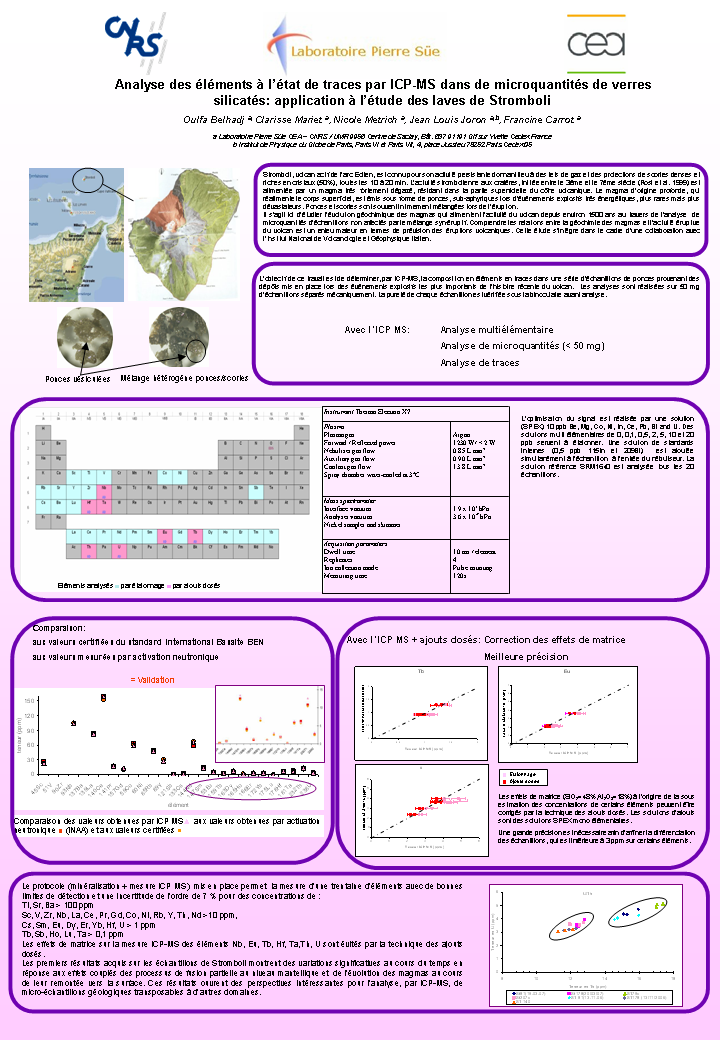

Stromboli is the most active volcano of the Eolian arc. It is known for its persistent activity which gives place to gas jets and slag projections dense and rich in crystals (50%), since approximately 1500 years.Its eruptions produce pounces (<10% crystals), exceptional fact for a basaltic volcano.The persistent activity is supported by a very strongly degassed magma, originally from the surface part of the volcanic cone.
The basaltic magma, rich in water and of deep origin is emitted only in the form of pounces during the most explosive events.The objective of this work is to determine the composition in traces elements (alkaline and alkaline-earth, rare earths, Th, Your, Nb…) magmas at the origin of the explosive events since 1500 years. The few analyses of total rocks (pounces) already carried out reveal chemical heterogeneities which are related to the mixture between the magma of deep origin and of the surface. To model and to understand the real geochemical evolution of the magmas in the 1500 last year, new data are necessary.
An analytical technique very significant, precise and multi elementary is necessary. The high sensitivity of the ICP-MS allows the study of microquantities (< 50 mg) of volcanic samples. The distinction of the various processes at the origin of geochemical heterogeneities is possible thanks to the accuracy and to the wide spectrum of elements accessible by ICP-MS.One of the difficulties is to find a procedure of mineralisation leading to the complete dissolution of a representative sample (< 50 mg imposed by heterogeneity). We chose to carry out an acid mineralisation on sand bath (220°C) in Teflon bombs. Comparison of the results of analysis of international standards by dissolution followed by ICP-MS measurements and by neutron activation measurements allow to validate the protocol. Indeed, a total dissolution of the sample and good detection limits are obtained without pollution contribution. The analyzed elements are given with exactitude by ICP-MS. Moreover the use of two techniques of calibration (method of the proportioned additions, method of calibration curves) allowed highlighting effects of matrix.
Instrumental neutron activation analysis,
Mass spectrometry.
•  Physics and chemistry for life sciences and the environment › Environmental chemistry and pollution control (Earth science)
Physics and chemistry for life sciences and the environment › Environmental chemistry and pollution control (Earth science)
• Laboratoire Pierre Süe UMR 9956 CEA-CNRS • Pierre Süe Laboratory UMR 9956 CEA-CNRS
• Analyse élémentaire au LIONS • Analysis of elements
• Analyse par spectrométrie de masse couplée à un plasma inductif (ICP-MS)










